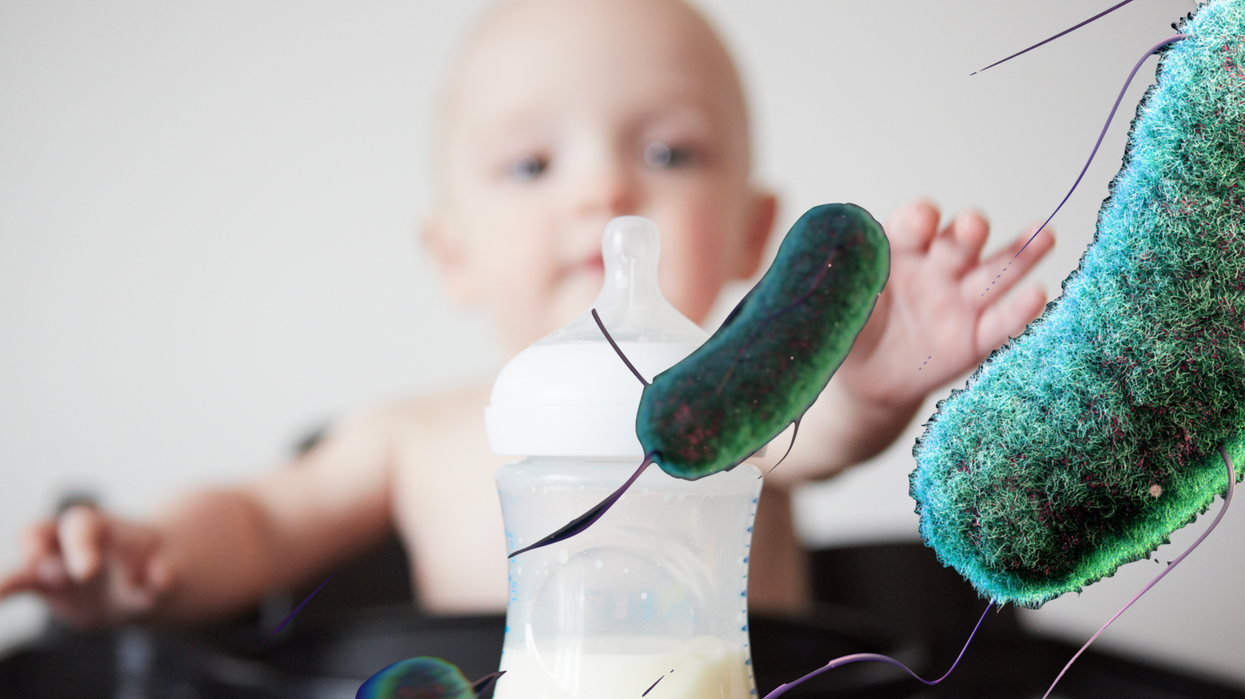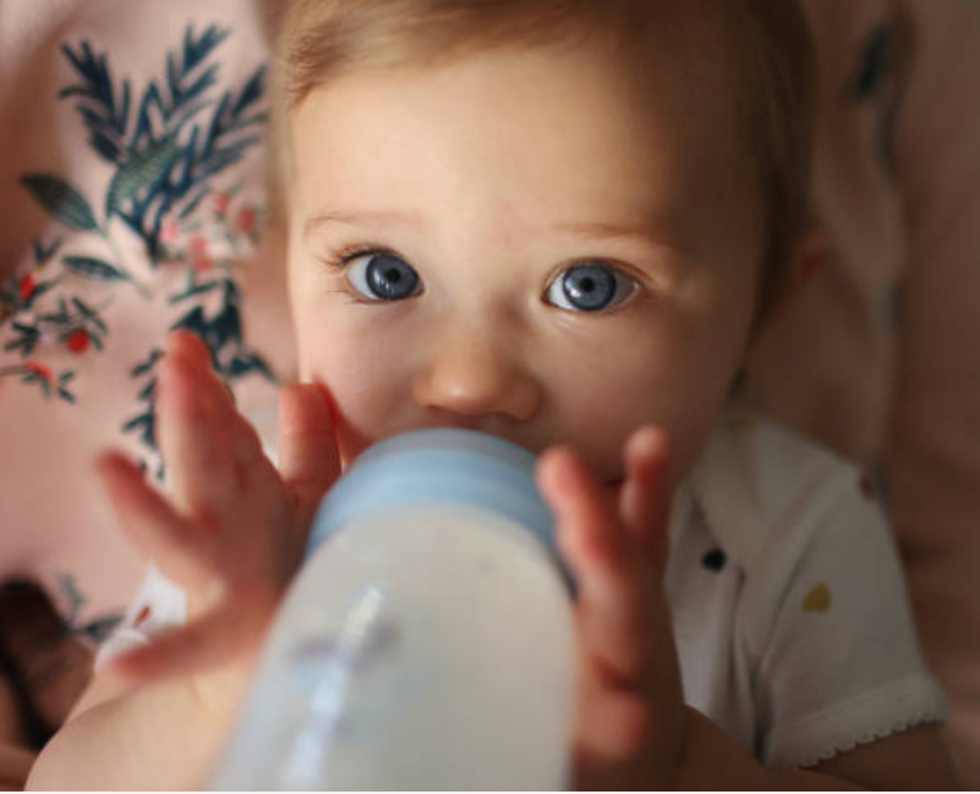E. coli found in 50% of baby bottles in shock study: Health warning as outbreak leaves 86 people hospitalised

Scientists have found E. coli In 56 percent of baby bottles
|Getty Images

- Scientists have found E. coli In 56 percent of baby bottles
- Parents urged to use the cold-water method to avoid risks
- At least 86 people have now been admitted to hospital
Don't Miss
Most Read
Scientists have found E. coli in more than half of baby bottles.
In light of the finding, a top doctor is urging parents to adopt the cold-water method in order to sterilise baby equipment.
The new research review, published in the Journal of Community Medicine & Public Health, found a range of problematic species in infant feeding bottles, including klebsiella, enterobacter, citrobacter, staphylococcus aureus, bacillus cereus, shigella, and salmonella, with e-coli found in 56.3 percent of baby bottles.
Public health guidelines globally recommend sterilisation of infant feeding equipment as contamination can pose a serious risk to infant health - from bottles, bottle caps and rings, dummies, and even breast pumps.

Contamination of baby bottles can pose a serious risk to infant health
|Getty Images
However, as co-author of the review Doctor Pamela Mason explains, it’s "extremely easy" for feeding equipment to become contaminated with microbes, as milk deposits provide the perfect breeding ground.
This can pose a "serious risk" to infant health, so parents must ensure that bottles, bottle caps and rings, dummies, and even breast pumps, are properly sterilised, she warns.
In the case of formula feed, current manufacturing processes do not allow for the production of a sterile product, so can result in contamination with Enterobacter sakazakii and Salmonella enterica. If carers of infants are then using poor sterilisation practices to prepare feeds, this can make the issue much worse.
However, as Doctor Mason points out, “parents and carers of babies can significantly reduce the risk of infection by preparing formula safely, handling it correctly and using appropriately sterilised equipment”.
According to GP and a co-author Doctor Gill Jenkins, the best way to properly sterilise baby equipment is to use the cold-water method with a chlorine-containing product like Milton Sterilising Tablets or Milton Sterilising Solution, which have been tried and tested and proven safe and effective for generations.
The method is low-cost and convenient and doesn’t require energy to produce heat. What’s more, it only takes 15 minutes to achieve sterilisation, which then lasts for 24 hours if the equipment is left in the solution, she explains.
How it works
Cold water sterilisers use chemicals, which are mixed with cold water, to sterilise feeding equipment. They can be bought in tablet or concentrated liquid form, which you add to cold water. They are also available as a ready-to-use sterilising solution.
Other methods may do the job reasonably well. However, they tend to have several disadvantages. For example:
- Boiling may cause scalding, and causes faster decay of teats
- Steam requires rinsing afterwards, bulky equipment, and potentially release microplastics into milk
- UV’s effectiveness depends on where the light shines and can take up to an hour to achieve sterilisation
The NHS recommends sterilising feeding equipment for infants aged 12 months and younger. This is because their immature immune systems are susceptible to infection and illness due to the colonisation of bacteria, fungi, and viruses in milk. Infants under two months are at the greatest risk, but as the child gets older, their immune system gradually ‘learns’ to cope with their environment and get stronger.
Commenting on her review, Doctor Mason said: “With our research review finding that over half of baby bottles harbour e-coli among a wide range of other potentially harmful microbes, it’s important for the safety and survival of babies that we know how to sterilise their feeding equipment appropriately. The safest, most convenient, and most cost-effective way to do this, according to our findings, is to use the cold-water method of sterilisation, using a proven safe and effective product such as Milton Sterilising Tablets and Milton Sterilising Solution.”
LATEST DEVELOPMENTS
 Lettuce leaves are thought to be behind the current E.coli outbreak | Getty Imagess
Lettuce leaves are thought to be behind the current E.coli outbreak | Getty Imagess E. coli outbreak latest
At least 86 people have now been admitted to hospital as a result of an E. coli outbreak linked to lettuce, though cases are slowing, health officials have said.
New data from the UK Health Security Agency shows there have been 45 further cases of E. coli infection as of June 18, taking the total number of confirmed cases across the UK since the outbreak began to 256.
All those who have been affected first developed symptoms before May 31.
The UKHSA said: “Although the rate of cases has now slowed, we expect the figure to rise as NHS laboratories refer specimens to UKHSA for genomic sequencing which can link cases to this outbreak strain.”
A number of food manufacturers have recalled sandwiches, wraps and salads sold in major supermarkets and retail chains over fears they are linked to the outbreak.
The Food Standards Agency has said lettuce used in the products are thought to be the likely source of the outbreak.










